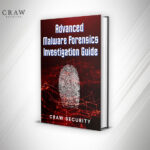Top 25 Python Programming Interview Questions And Answers

Top 25 Python Programming Interview Questions And Answers
Python Programming Interview Questions
Since the inception of Python Programming Language three decades ago, it is quite evident that it has become a lifeline coding language for many important works, such as web development, app development, cyber security, and many more. Moreover, as there is a steep rise in the number of cyberattacks, we sincerely hope that it continually keeps enhancing its worth to add charm to the development of cybersecurity personnel.
Furthermore, in this blog post, there are detailed and complex questions frequently asked by hiring managers during interviews with Python job applicants. Moreover, this blog post is initiated in the common interest of Python job seekers byCraw Security, the best cybersecurity training institute in India, which offers world-class Python Programming Course in India affiliated to the future skills Prime, a MeitY – NASSCOM, Digital Skilling Initiative.
In addition to this, we sincerely require an understanding of the Top 25 Python Programming Interview Questions and Answers that are mentioned in the following:
1: What is Python?
An elevated, broad-objective programming language called Python is frequently used for creating desktop and web applications in addition to scripting and automation. It was developed in 1991 by Guido van Rossum and, since then, has grown to be one of the most widely used programming languages worldwide.
Python is a great choice for novices because it is also straightforward to learn and has a basic syntax. Additionally, it provides significant capabilities for experienced users, including support for numerous programming paradigms, dynamic typing, and object-oriented programming.
2: What are the key features of Python?
The key features of Python are as follows:
Easy to learn
Versatility
Object-oriented
High-level language
Portable
Extensible
3: What is a variable in Python?
In Python, a variable is a term that designates a quantity kept in storage. Additionally, variables are able to keep information of many types, including strings, dictionaries, lists, and numbers.
Additionally, variables can take user input, giving the client control over the information used by the application. Furthermore, the ability to store and manage data in our programs due to variables makes them crucial.
4: What are the different data types in Python?
The different data types in Python are:
Numbers (int, float, complex)
Strings
Lists
Tuples
Sets
Dictionaries
Booleans
5: How do you create a string in Python?
To create a string in Python, you can use either single or double quotes.
For example:
myString = ‘This is a string.’
or
myString = “This is a string.”
6: How do you create a list in Python?
In order to create a checklist in Python, you can nicely utilize square brackets for retaining a comma-separated sequence of values.
For e.g., to construct a list of colors:
colors = [“red,” “blue,” “green”]
7: How do you create a tuple in Python?
Parentheses and commas can be used to compose the items into a tuple.
For illustration, my tuple = (1, 2, 3)
8: How do you create a dictionary in Python?
In order to compose or create a dictionary in Python Programming language by employing the dict() constructor or by utilizing curly braces. For example:
# Using dict constructor
dict_example = dict(key1=’value1′, key2=’value2′)
# Using curly braces
dict_example = {‘key1’: ‘value1’, ‘key2’: ‘value2’}
9: How do you create a set in Python?
You can create a set in Python using curly brackets. For example:
my_set = {1, 2, 3}
10: How do you create a function in Python?
For creating a function in Python, you can simply compose a function by employing the “def” keyword followed by the name of the function, a set of parentheses with some input protocols distributed by commas, and a colon. Moreover, the code block within the function might be indented. For e.g.,
def greet(name):
print(“Hello, ” + name + “!”)
greet(“John”)
This will output:
Hello, John!
11: How do you create a class in Python?
For creating a class in Python, you can compose a class utilizing the “class” keyword followed by the name of the class. In addition, the class description should indulge a constructor method (“__init__”) that is spontaneously termed when an illustration of the class is designed. Here’s an example:
class Person:
def __init__(self, name, age):
self.name = name
self.age = age
def say_hello(self):
print(“Hello, my name is ” + self.name)
person = Person(“Rohit”, 30)
person.say_hello()
This will output:
Hello, my name is Rohit
12: How do you import a module in Python?
For importing a module in Python programming, you can use the “import” keyword followed by the module name. For example, to import the “math” module, you would write:
import math
Once the module is imported, you can access its functions and variables using the dot notation. For example:
import math
print(math.pi)
This will output:
3.141592653589793
13: How do you use control structures in Python?
The control structures can be utilized to manage the program or script flow. In addition, these control structures are generally utilized to manage decisions, looping, and exceptions.
Decision Making: When deciding whether or not to perform a particular line, Python employs if statements to analyze Boolean values.
Looping: Python’s “for” and “while” loops are employed to cycle through data collections and run code for every element of the collection.
Exceptions: Python’s try, except, and finally clauses are used to manage problems and exceptions that may arise while a program is being executed.
14: How do you use loops in Python?
Python uses loops to repeatedly run a section of code up until a predetermined condition is fulfilled. For and while loops are two more of Python’s primary loop types.
For loops are employed to repeatedly iterate over a set of data. They can iterate over a list, tuple, string, dictionary, set, and range in addition.
Example of a for loop:
my_list = [1,2,3,4,5]
for x in my_list:
print(x)
The output of the code will be:
1
2
3
4
5
While loops are used to execute a block of code until a certain condition is met.
Example of a while loop:
i = 1
while i < 6:
print(I)
i += 1
The output of the code will be:
1
2
3
4
5
15: How do you use conditional statements in Python?
Python uses conditional formatting to take various actions depending on whether a given condition is either true or false. Moreover, the basic syntax for a conditional statement is:
if condition:
execute this code
elif condition:
execute this code
else:
execute this code
For example:
x = 5
if x > 10:
print(“x is greater than 10”)
elif x < 10:
print(“x is less than 10”)
Else:
print(“x is equal to 10”)
16: How do you use exception handling in Python?
Python uses the try and except commands to handle exceptions. Additionally, the code that might lead to an error is put in the try block, as well as the code that would deal with it is put in the except block.
Example:
try:
print(x)
except:
print(“An exception occurred”)
17: How do you use file handling in Python?
File handling in Python can be done using the built-in open() function. In addition, the open() function takes two parameters: the filename and the mode of the file. The mode can be either read “r,” write “w,” append “a,” or binary “b.” After opening the file, you can use the read(), write(), or close() methods to manipulate the file.
For example:
myfile = open(“myfile.txt”, “w”)
myfile.write(“This is some text”)
myfile.close()
This code will open the file myfile.txt in write mode and write the string “This is some text” to the file. It then closes the file.
18: How do you use regular expressions in Python?
With the re-module, regular expressions can be utilized in Python. You must first install the re-module before you can utilize regular expressions in Python. Once imported, you can create a regular expression object with the re.compile() function. After you have a regular expression object, you can utilize several methodologies in it to search and substitute strings, such as search(), findall(), sub(), and split().
19: How do you use the built-in functions in Python?
Built-in functions are always accessible and part of the Python programming language. You only need to invoke a built-in function with the correct inputs to use it. For e.g., to compute the complete value of a number, you would call the abs() function like this:
abs_value = abs(-5)
The abs_value variable now holds the absolute value of -5, which is 5.
20: How do you use the NumPy library in Python?
A strong Python package for scientific computing is called NumPy. It offers a large range of integrated modules and functions that make it simple for users to manage and analyze numerical data in Python. You must import the NumPy library into your Python script before using it:
import numpy as np
Once imported, you can use the library’s functions and modules to manipulate data. For example, to create a NumPy array, you can use the array() function:
my_array = np.array([1,2,3,4,5])
Moreover, you can also utilize NumPy to execute mathematical and statistical operations, like finding the mean, median, and standard deviation of an array:
mean = np.mean(my_array)
median = np.median(my_array)
std = np.std(my_array)
Ultimately, NumPy is a strong library that can be utilized to crack a variety of data-related problems. With its broad range of functions and modules, it is easy to get started and initiate researching the opportunities of NumPy.
21: How do you use the Pandas library in Python?
A strong Python package for data processing, modification, and visualization is called Pandas. To use Pandas, you first require to install it into your Python program with the following command:
import pandas as pd
Once Pandas is installed, you can utilize it to load data from files, databases, and other sources, manipulate data and generate visualizations. For more precise instructions on operating with Pandas, please confer the official documentation.
22: How do you use the Matplotlib library in Python?
Matplotlib is a Python library used for plotting data. To use Matplotlib, you must first import the library using the import command. Then, you can use the various functions provided by Matplotlib to create graphs and charts. Once you have created the chart, you can display it by calling the show() function. For example, the following code will create a simple line chart:
import matplotlib.pyplot as plt
x = [1,2,3,4,5]
y = [2,4,6,8,10]
plt.plot(x,y)
plt.show()
23: How do you use the Scikit-learn library in Python?
Scikit-learn is a powerful Python library for machine learning. It features various algorithms like support vector machines, random forests, and k-neighbours, and it also supports Python numerical and scientific libraries like NumPy and SciPy.
Using Scikit-learn is straightforward. First, you need to import the desired module(s) from the library. Then, you can use the various functions and methods available in the module to implement a machine-learning task. For example, you can use the fit() method to train a model using a given dataset. You can also use the predict() method to make predictions using a trained model. Finally, you can use the evaluate() method to assess the performance of a model.
24: How do you use the Tensorflow library in Python?
Install Tensorflow using pip:
pip install –upgrade tensorflow
Import TensorFlow into your Python program:
import tensorflow as tf
Create Tensors:
a = tf.constant([1.0, 2.0, 3.0, 4.0, 5.0, 6.0], shape=[2, 3], name=’a’)
b = tf.constant([1.0, 2.0, 3.0, 4.0, 5.0, 6.0], shape=[3, 2], name=’b’)
Create a session to run the graph:
sess = tf.Session()
Run the graph in the session:
c = tf.matmul(a, b)
print(sess.run(c))
Close the session when you are done:
sess.close()
25: How do you use the Keras library in Python?
Python-based Keras is a high-level deep-learning package. You must use pip or conda to install the Keras library before you can use it in Python. You can import the library and begin creating models after installation. The Keras package also offers straightforward APIs for developing and refining deep learning models.
These APIs can be used to provide model architecture, compile models, train models, and assess models. Additionally, Keras may be used to pre-process data, show the model architecture, and more.















